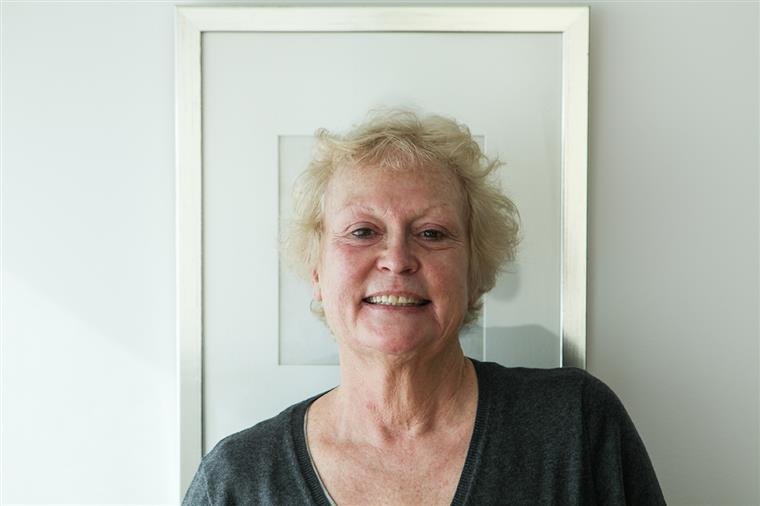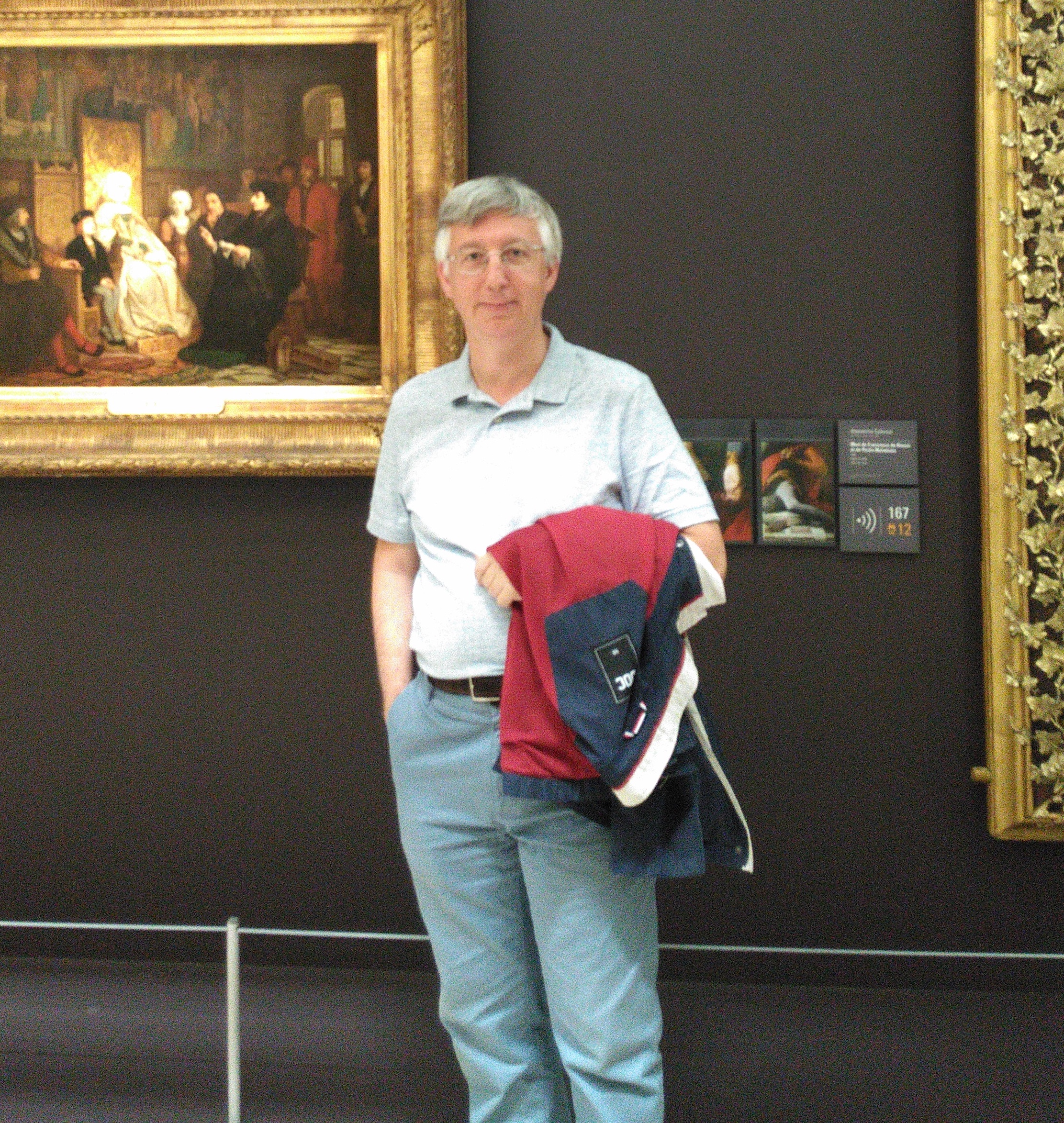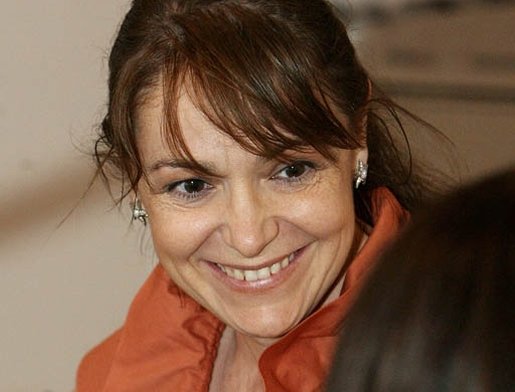Conferenciantes
Keynote Speakers
Annemarie Jordan Gschwend

A Research Scholar with the Centro de História d'Aquém e d'Além-Mar (CHAM) in Lisbon and Switzerland since 2010, she obtained her Ph.D in 1994 from Brown University, writing a dissertation on the court, household and collection of Catherine of Austria, queen of Portugal (1507-1578). Her areas of specialization include patronage, collecting, menageries and Kunstkammers at the Renaissance courts in Austria, the Netherlands, Spain and Portugal. In recent years, this research has focused on the court culture, patronage and collections of Habsburg women: in particular the sisters, wives and aunts of the rulers: Philip II of Spain, and the Emperors Charles V and Maximilian II. A further specialization focuses on the cultural and artistic transfer between Africa, Asia, Brazil and the Renaissance Habsburg courts.
She is author of numerous publications (articles, exhibition catalogue essays and contributions in books), including her own books: Retrato de Corte em Portugal. O legado de António Moro (1552-1572), (Lisbon, 1994), The Story of Süleyman. Celebrity Elephants and other Exotica in Renaissance Portugal (Zurich, 2010), and a recent biography: Catarina de Áustria. A rainha colecionadora, (Lisbon, 2012). From 2008 to 2013 she was principal coordinator of the Getty Foundation funded research project on Hans Khevenhüller, Diplomat and Artistic Agent at the Court of Philip II of Spain.
Dr Jordan was decorated in 2011 by the Portuguese government with the Order of Henry the Navigator for guest curating the international exhibition: Ivories of Ceylon. Luxury Goods of the Renaissance which venued in 2010 at the Museum Rietberg in Zurich. This was the first exhibit on Portugal during the Age of Discovery to be shown in Switzerland. She presently guest curated an exhibition on Habsburg pets, wild animals and menageries (Echt Tierisch! Die menagerie des Fürsten), Schloss Ambras, Innsbruck, which venues June 18, 2015, and is co-editor (with Kate Lowe) of the recent book, The Global City. On the streets of Renaissance Lisbon, London (Paul Holberton, October 2015).
Mía Rodríguez-Salgado
 Graduate in History from the University of Durham and a PhD from the University of Hull, she began teaching history at the University of St Andrews, Scotland in 1979, and later at the University of Newcastle-Upon-Tyne, moving to the International History Department of the London School of Economics and Political Science in 1985. She obtained the Chair of International History in 1996. She was an advisor to the exhibition on the Great Navy in 1988 and collaborated with others later, as well as participating in two history documentaries on television and radio. His research and many of his publications have been devoted to International Politics and aspects of the History of the Court in the reigns of Charles V and Philip II.
Graduate in History from the University of Durham and a PhD from the University of Hull, she began teaching history at the University of St Andrews, Scotland in 1979, and later at the University of Newcastle-Upon-Tyne, moving to the International History Department of the London School of Economics and Political Science in 1985. She obtained the Chair of International History in 1996. She was an advisor to the exhibition on the Great Navy in 1988 and collaborated with others later, as well as participating in two history documentaries on television and radio. His research and many of his publications have been devoted to International Politics and aspects of the History of the Court in the reigns of Charles V and Philip II.
Among his many publications:
- - The Changing Face of Empire: Charles V, Philip II and Habsburg Authority 1551-1559 (Cambridge University Press, Cambridge etc., 1988) On-line reprint from 2008.
Spanish edition: Un Imperio en Transición. Carlos V, Felipe II y su mundo (Editorial Crítica, Barcelona, 1992)
Italian edition: Metamorfosi di un Impero. La Politica Asburgica da Carlo V a Filippo II (1551-1559) (Vita e Pensiero, Milan, 1994) Armada. The Official Catalogue of the National Maritime Museum Exhibition (With contributions from the staff of the National Maritime Museum; Penguin Books, 1988) - Edited with Dr. Simon Adams, England, Spain and the Gran Armada, 1585-1604. Essays from the Anglo-Spanish Conferences, London and Madrid 1988 (John Donald, Edinburgh, 1991)
- Felipe II. El «Paladín de la Cristiandad» y la Paz con el Turco. (Colección «Síntesis» XI. Secretariado de Publicaciones, Universidad de Valladolid, Salamanca, 2004)
- 'The Court of Philip II of Spain' in R. Asch and A.M. Birke (Eds), Princes, Patronage and the Nobility. The Court at the Beginning of the Modern Age c.1450-1650 (The German Historical Institute, London, and Oxford University Press, 1991) pp.205-244
- 'Honour and profit at the court of Philip II of Spain' in M. Aymard & M. Romani (eds) La Cour comme Institution Economique. (Éditions de la Maison Des Sciences de l'Homme, Paris, 1998) pp.67-86.
- 'Charles V and the dynasty', in H. Soly (ed.) Charles V. 1500-1558. pp.27-111
(English edition, Mercatorfonds, Antwerp, 1999)
Also in French and Dutch editions, 1999
Spanish and German editions 2000. - 'King, Bishop, Pawn? Philip II and Granvelle in the 1550s and 1560s', in: Krista De Jonge & Gustaaf Janssens (éds), Les Granvelle et les Anciens Pays-Bas (Leuven, 2000) pp.105-134.
- ‘"Una Perfecta Princesa" Casa y vida de la reina Isabel de Valois (1559-1568). Primera Parte.', in: C. Gómez-Centurión Jimenez (ed.), Monarquía y Corte en la España Moderna, Monografías de Cuadernos de Historia Moderna, Anejo II, (Madrid, 2003), pp.39-96. Also in:
http://www.ucm.es/BUCM/revistas/ghi/02144018/articulos/CHMO0303220039A.PDF  ‘"Una Perfecta Princesa" Casa y vida de la reina Isabel de Valois (1559-1568). Segunda Parte.', in Cuadernos de Historia Moderna, vol.28 (Madrid, 2003) pp.71-98. Also in:
‘"Una Perfecta Princesa" Casa y vida de la reina Isabel de Valois (1559-1568). Segunda Parte.', in Cuadernos de Historia Moderna, vol.28 (Madrid, 2003) pp.71-98. Also in:
http://www.ucm.es/BUCM/revistas/ghi/02144018/articulos/CHMO0303120071A.PDF
José Luis Gonzalo Sánchez-Molero
Doctor in Modern History and Associate Professor of the Complutense University of Madrid, he has been Academic Secretary of the Faculty of Information Sciences between 2010 and 2015, and since that year he has been Dean of the same Faculty.
His lines of research address the study of courtly bibliography in Spain during the sixteenth century, without abandoning other related work perspectives, such as the Erasmism in Spain, the pedagogy in the Modern Age, Miguel de Cervantes and the ancient book in the East.
He has obtained the Bibliography Prize of the National Library in 1997 and the Bartolomé José Gallardo Award for bibliographical research in 2002 for his research on the royal libraries in Spain during the sixteenth century. He is the author of: Felipe II. La educación de un "felicísimo príncipe" (1527-1545). Madrid, 2013; Leyendo enEdo. Breve guía sobre el libro antiguo japonés. Madrid, 2013; La Epístola a MateoVázquez: historia de una polémica literaria en torno a Cervantes. Alcalá de Henares, 2010; El César y los libros. Un viaje a través de las lecturas del emperador desde Gante aYuste. Cuacos, 2008; Regia Bibliotheca. El libro en la corte Española de Carlos V. Mérida, 2005, 2; and La Librería rica de Felipe II. Estudio histórico y catalogación. San Lorenzo de El Escorial, 1998.

Anne J. Cruz
She obtained her doctorate in Spanish literature from Stanford University, California. Emeritus scholar of Golden Age literature at the Department of Modern Languages and Literatures of the University of Miami, Florida. Her publications include studies on the poetry of the Golden Age, Spanish female writers, the picaresque novel and Cervantes.
She has directed fifteen collectives, among the most recent ones: Early Modern Habsburg Women: Transnational Contexts, Dynastic Continuities, Cultural Politics, with Maria Galli Stampino (2013); Beyond Spain’s Borders: Women Players in Early Modern National Theaters, with María Cristina Quintero (2016); and Routledge Research Companion to Early Modern Spanish Women Writers, with Nieves Baranda Leturio (2017).
She is a founding member of the Society for Renaissance and Baroque Hispanic Poetry, Chicago Cervantes Symposium and Florida Cervantes Symposium. In 2015, she was named corresponding member to the Real Academia de la Historia; in 2016, she joined the Orden de Don Quijote in the Sociedad Nacional Honoraria Hispánica Sigma Delta Pi. She currently co-directs the magazine, Early Modern Women: An Interdisciplinary Journal and is editor of the series New Hispanisms: Cultural and Literary Studies published by the University of Nebraska.
Vanessa de Cruz Medina
Universitat Pompeu Fabra. vanessa.decruz@upf.edu / vanessadecruz@gmail.com
Vanessa de Cruz Medina is a postdoctoral scholar "Beatriu de Pinós" in the Department of Humanities of the Pompeu Fabra University. PhD in History from the Complutense University -with a thesis entitled "Cartas, Mujeres y Corte en el Siglo de Oro" -, she has been a postdoctoral scholar "Juan de la Cierva" at the Fundación Carlos de Amberes and "Mellon Visiting Fellow" at the prestigious Villa I Tatti, The Harvard University Center for Italian Renaissance Studies.
Her main lines of research focus on the social, political and cultural history of the court of Madrid during the sixteenth and seventeenth centuries, focusing on the women of the Habsburg dynasty and the ladies who served in the houses of these queens, princesses and infantas. She is specialized in the study of correspondence written by women in the court, female patronage networks and artistic patronage, as well as political and cultural relations between the courts of the Hispanic Monarchy, the Holy Roman Empire and Italy.
Between its publications it is possible to emphasize Una dama en la corte de Felipe II: cartas de Ana de Dietrichstein a su madre, Margarita de Cardona (Carolina University of Prague, in press); "An Illegitimate Habsburg: Ana Dorotea de la Concepcion, Marquise of Austria (1611-1694)" (Early Modern Habsburg Women: Transnational Contexts, Cultural Conflicts, Dynastic Continuities, Anne J. Cruz and Maria Galli Stampino (eds.), Ashgate, 2013, pp. 96-117); "'In service to my Lady, the Empress, as I have done every other day of my life': Margaret of Cardona, Baroness of Dietrichstein and Lady-in-Waiting to Maria of Austria" (The Politics of Female Households: Ladies- in-waiting across Early Modern Europe, N. Akkerman and B. Houben (eds.), Brill, 2014, pp. 99-119), and "Private correspondence" (The Routledge Research Companion to Early Modern Spanish Writers, N. Baranda and AJ Cruz (eds.), Routledge, 2017, pp. 285-295).
She has been a member of the Executive Committee (2015-2017) of the Association for Spanish and Portuguese Historical Studies (ASPHS) and secretary of the magazine Litterae. Cuardernos sobre Cultura Escrita as well as the book collection Biblioteca Litterae. Throughout his career, she has participated in the organization of a large number of congresses and seminars, and has been a member of several projects and research groups. She was the scientific coordinator of the cultural project "Tapices flamencos en España" (www.flandesenhispania.org).
Kelley Helmstutler Di Dio
Kelley Helmstutler Di Dio es decana asociada de la Facultad de Artes y Ciencias y profesora de Historia del Arte en la Universidad de Vermont. También es editora de la serie Visual Culture in Early Modernity, Routledge / Taylor & Francis. Di Dio es una especialista en escultura italiana y española de los siglos XVI y XVII, coleccionismo, regalos de Estado e intercambios artísticos. Ha publicado ampliamente sobre estos temas; incluyendo libros: Leone Leoni and the Status of the Artist at the End of the Renaissance (Ashgate, 2011); Sculpture Collections in Early Modern Spain (with Charo Coppel, Ashgate, 2014); Making and Moving Sculpture in Early Modern Italy (Ashgate, 2015); Artistic Reciprocities: Spain, Italy and Early Modern Art (with Tommaso Mozzati, próximamente) y Shipping Sculptures in and out of Early Modern Italy (próximamente); y docenas de artículos y ensayos. Su investigación ha sido apoyada por becas y subvenciones del Ministerio de Artes y Cultura de España, la Fundación Samuel H. Kress, el Proyecto del Archivo Medici, y el Centro de Estudios del Renacimiento de Harvard "Villa I Tatti". Ella es una profesora y académica entregada y recientemente ganó el premio a la excelencia en la enseñanza de su institución, el Premio Kroepsch-Marice Teaching.
Ana García Sanz

Licenciada en Historia del Arte por la Universidad Complutense de Madrid en 1985. Desde 1989, trabajo como conservadora en el Departamento de Conservación de Patrimonio Nacional. Entre mis competencias se encuentran dos monasterios, el de las Descalzas Reales de Madrid y el de Santa Clara de Tordesillas (Valladolid) y la colección real de alfombras. En relación con estas competencias he trabajado en la elaboración del inventario y posterior catalogación de los fondos artísticos, en el diseño y montaje de almacenes, proyectos expositivos y redacción de textos. Mi trabajo está enfocado al estudio de los fondos encomendados, a su conservación, exposición y divulgación. Parte de mi trabajo se centra en la difusión, mediante la actividad docente, colaborando con diversas universidades (UCM, UAM, Universidad de Jaen, Universidad de Granada), fundaciones e instituciones culturales, así como con otros museos (MN de Escultura de Valladolid, Paul Getty Museum, MFA de Huston, MFA de Boston, MN del Prado, etc). Igualmente participo en el diseño y montaje de exposiciones, con asesoramiento científico y redactando fichas y textos para los catálogos. Especialmente relevante es la atención al personal investigador de diversos centros de estudio, facilitando el acceso a las colecciones y el intercambio de conocimientos. En este sentido me ocupo además de atender numerosas visitas de grupos de estudio (British Museum, Louvre, Fourniture History Society, CODART, etc).
Mis publicaciones se centran en los museos y colección encomendados. Entre ellas. "Las Descalzas Reales. Orígenes de una comunidad religiosa en el siglo XVI", Madrid, 2010; "Los tapices de la Eucaristía. Función y ubicación en el Monasterio de las Descalzas Reales", en "Rubens. El Triunfo de la Eucaristía", Museo del Prado, 2014, o “Jeanne d’Autriche fondatriche des Dëchaussées royales de Madrid”, en «La dame de coeur»Patronage et mécénat religieux des femmes de pouvoir Dans l’Europe des XIVe-XVIIe siècles. Presses Universitaires de Rennes, 2016.
Palma Martínez-Burgos García

Doctor in art history and professor in the Faculty of Humanities of Toledo, (UCLM), where she teaches History of Spanish Art and Contemporary Art Theory. Since July 2015 she has been accredited as a university professor at ANECA. In the field of research, her lines of work, in addition to the studies of genre in which she was a pioneer participating in the publication of George Duby in 1982, are the aspects of the orthodoxy, the spirituality and the visual culture of the art of the sixteenth and seventeenth centuries with special attention to the Reformation and Counter-Reformation. She has numerous publications in national and international specialized journals and has collaborated in various seminars, doctoral courses and masters of the Spanish University. In the field of museology she has participated in projects such as REYES Y MECENAS (Toledo, 1992), CAROLUS (Toledo, 2000) and EL TALLER DEL GRECO (Athens, October 2007-January 2008). She has also curated the exhibitions: ERASMO EN ESPAÑA, LA RECEPCIÓN DEL HUMANISMO (Salamanca 2002), CELOSÍAS, (Toledo, 2006), DOMINICAS, VIII CENTENARIO, (Toledo 2007-2008), and LA ESTELA DEL MILAGRO: EL ENTIERRO DEL SEÑOR DE ORGAZ (Toledo, 2014) framed in the IV centenary of the Greco. During the years 2008-2009 she has coordinated the inventory of the textile patrimony of the Cathedral of Toledo and in 2014 she was president of the XX National Congress of History of Art (CEHA) El GRECO EN SU IV CENTENARIO: PATRIMONIO HISPÁNICO Y DIÁLOGO INTERCULTURAL, held in Toledo and she has coordinated the edition of the Minutes (Service of Publications UCLM, 2016).
Since 2008 she is part of the board of the National Museum of Sculpture of Valladolid and at the present time she is chair of the board of Directors of the Spanish Committee of Art History.






